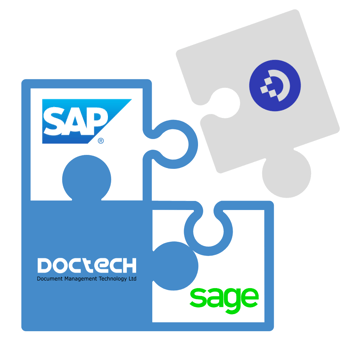When choosing an electronic document management system (EDMS) there are important points to consider that will not only impact the success of the implementation, but importantly, how well it's adopted by staff.
To receive the biggest business benefits, any new software should improve business processes, aid the work of employees, offer a good return on investment and have the ability to scale as the business does.
Understand What an EDMS Is: Learn the core functions of an Electronic Document Management System (EDMS), how it improves access, workflow, and data accuracy across an organisation.
Why Businesses Implement EDMS: Explore common triggers for adopting an EDMS, such as compliance needs, data loss, inefficient manual processes, and the increasing volume of documents.
How to Choose the Right EDMS: Get practical guidance on evaluating your current processes, defining requirements, and selecting a scalable and cost-effective solution tailored to your business.
Put simply, an electronic document management system (EDMS) is a digital repository for storing and searching for documents from any location with an internet connection. This in itself is a huge win, but the true value comes from the features on offer that can be tailored to individual business needs.
documents from any location with an internet connection. This in itself is a huge win, but the true value comes from the features on offer that can be tailored to individual business needs.
The typical document types stored include invoices, purchase orders, contracts, digital forms, employee data and HR policies. The features in a dedicated electronic document management system (EDMS) mean that when documents are stored they can trigger workflow tasks for document approvals and / or reminders. When certain documents are stored for example, they could drop into an employees task list notifying them they need attention.
An EDMS provides a transparent place for documents to be stored and predefined rules can be applied to determine what happens to it next. This might include detailed data extraction, getting it approved or linking it to another document within the system.
An electronic document management system (EDMS) reduces the need to print as well as the time wasted on manual data entry into business systems. Keying invoice data in to a finance package for example is no longer required and employees can focus their attention on more important tasks.
Critically, an EDMS comes with off the shelf features and functionality but is configured exactly to business requirements.
An electronic document management system (EDMS) is often implemented after business leaders come to an agreement that a more formal and structured solution is required to house their important documents.

More often than not, organisations want the ability to access documents from different locations. Whether this is to facilitate hybrid working, because the business has multiple offices or to speed up retrieval times while having enforceable user permissions.
Many find the need to implement an electronic document management system (EDMS) comes from a knock on effect elsewhere in the business. It could be a reaction to the number of documents rapidly increasing as the business grows, or because of the need to avoid risk related to regulations surrounding ISO or GDPR requirements.
.png?width=350&height=350&name=TEMPLATES%20(16).png) Another trigger for looking into electronic document management is in response to an incident such as loss of data or an error with a customer order due to lax document processes.
Another trigger for looking into electronic document management is in response to an incident such as loss of data or an error with a customer order due to lax document processes.
We have seen this many times with clients where high value purchase orders have been raised with ease or when invoices have been paid with no proof that the goods were received.
Manual data entry and the time it takes, along with the problems that arise from human error are key problems faced by organisations we speak with. These problems can be removed altogether with the correct solutions in place.
Business leaders are also realising that it is very problematic and expensive to repeatedly hire more staff to keep up with the demand of processing documents.
It is critical that some level of preparation is carried out before speaking to vendors to ensure your organisation gets the most appropriate solution as well as the best provider for the long term.
The key questions to consider:


This article covers the main points of how to choose an electronic document management system (EDMS) but in our experience, organisations are hesitant for far too long about what to do. This causes problems to continue unnecessarily and more money and time to be wasted.
Many employees know a better solution is needed for their document processes but put off because they're either too busy, think it's more hassle than it actually is, or believe the price to be out of reach.
Our solutions can be implemented quickly, on budget and in a way that causes as little disruption to the working day as possible. The Managing Director of constructions logistics company Finch Aggregates said this about our electronic document management system:
"Using a new system with our highest workload on record meant all our tasks were completed in a much shorter period of time.”
Get in touch for an informal chat or a demo at a time to suit you.
Manual document processes are still common place in many organisations but the frightening reality is, they're slow, error prone and costly for the business. If it was up to us, ghastly manual document processes would always ...
DocuWare is a document management and workflow automation platform that removes the headache around searching for documents stored in them, making lengthy and time-consuming searches a thing of the past.
A vehicle management system provides fleet management or fleet leasing companies everything they need to know on the status of their fleet. It collects, tracks and monitors data on vehicle's status, location, mileage, fuel ...